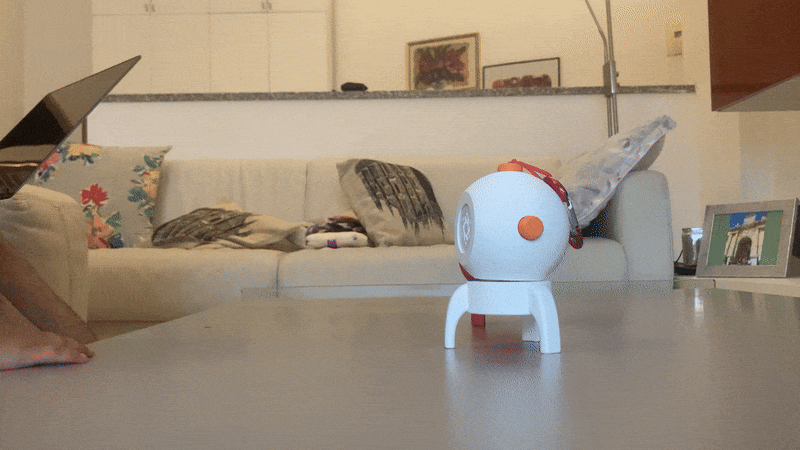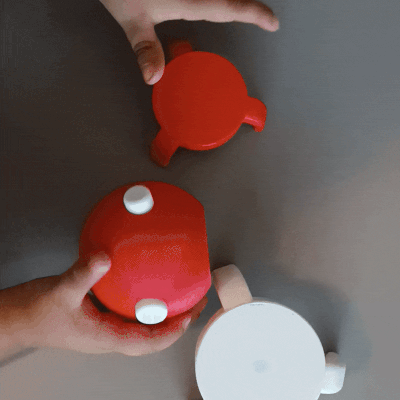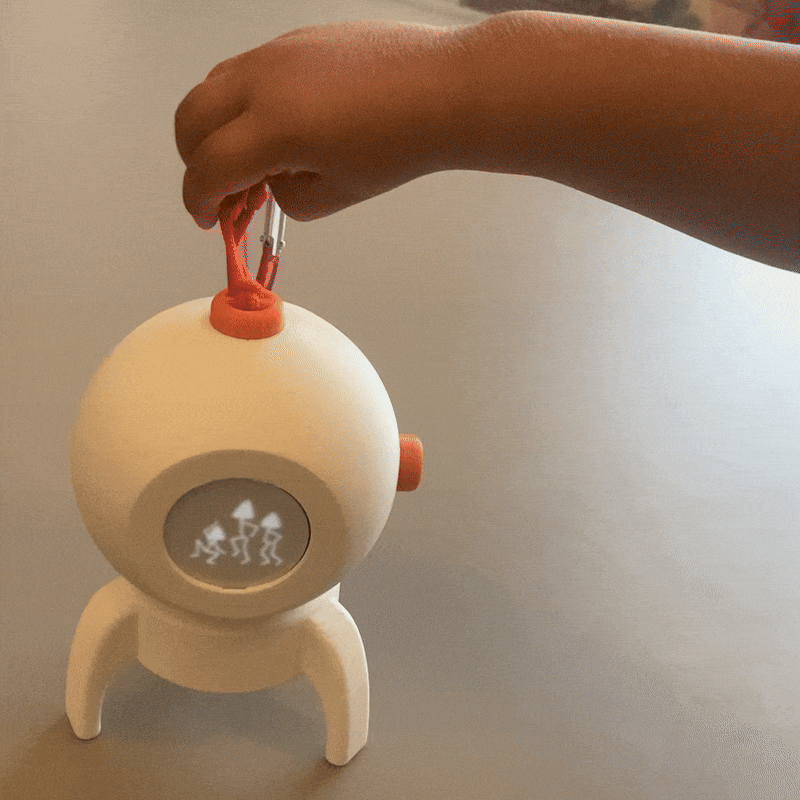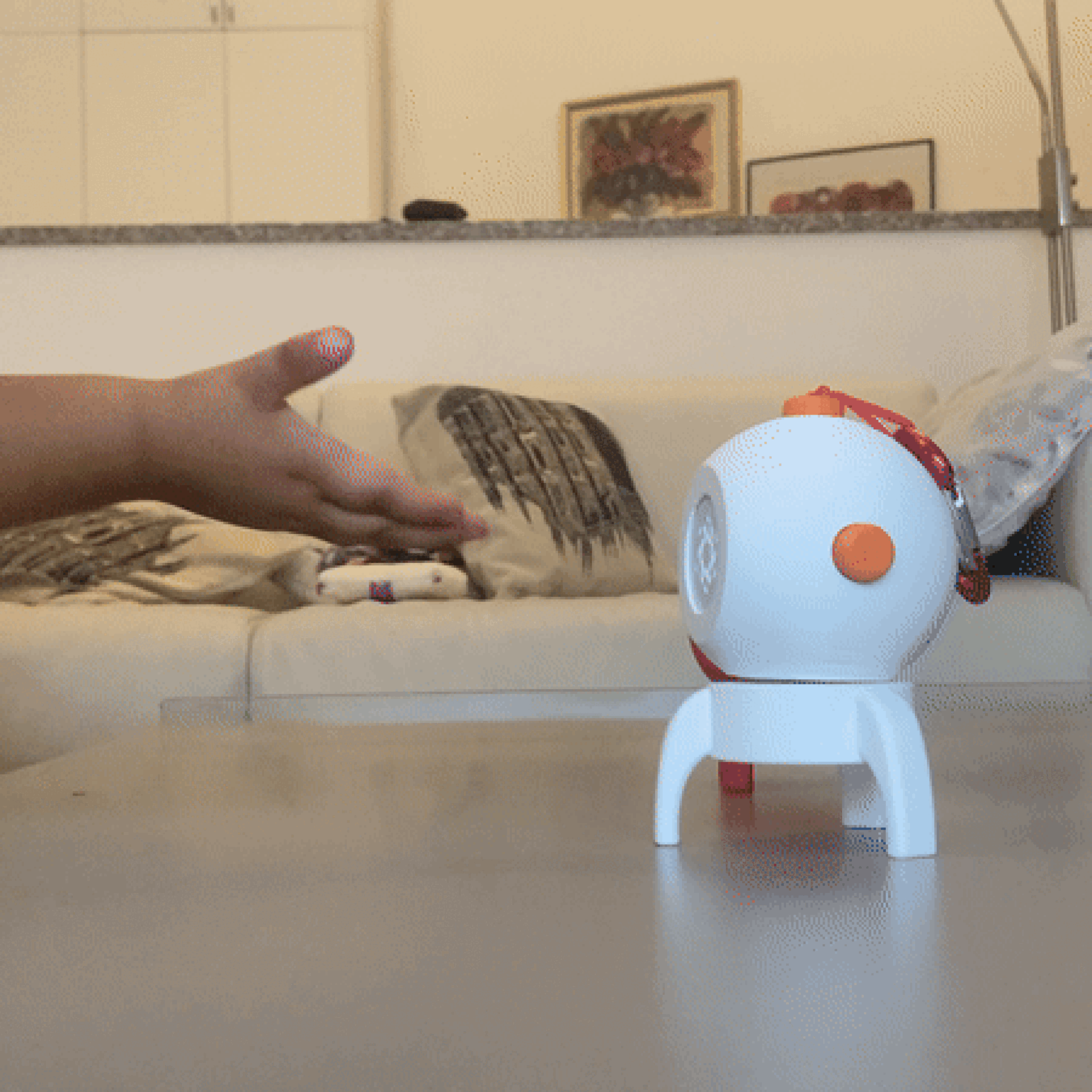Abstract
Nebulo is a self-management system for asthmatic children that combines playful storytelling, environmental awareness and respiratory tracking to empower children and reassure caregivers in the everyday management of pediatric asthma.
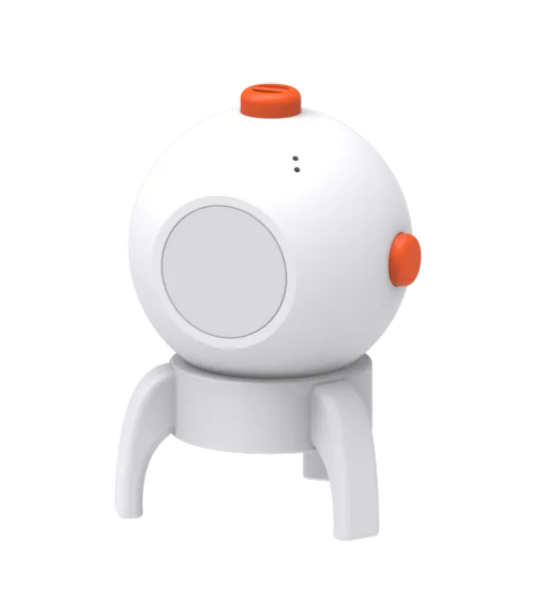

Nebulo is a self-management system for asthmatic children that combines playful storytelling, environmental awareness and respiratory tracking to empower children and reassure caregivers in the everyday management of pediatric asthma.

Design a multimodal experience with intelligent voice assistants in the healthcare field.
Focus on helping people understand their body data, building trust and transparency in conversational health interfaces, and exploring ethical impacts of these technologies.
Use a hands-on UX approach to design solutions that support health literacy and well-being in everyday life.
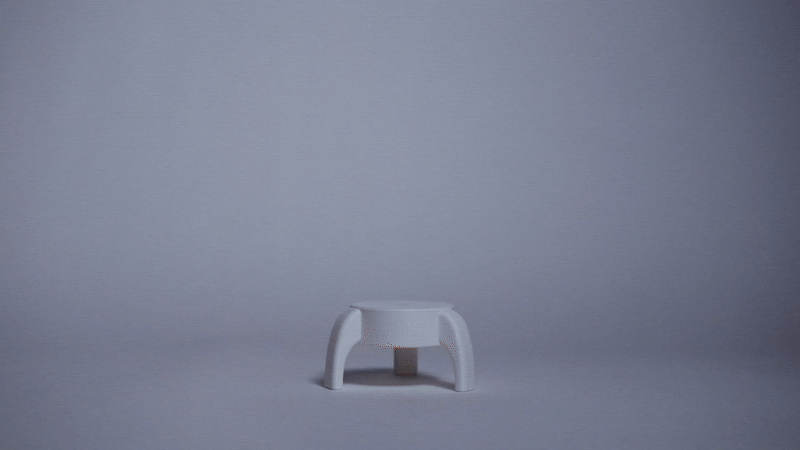
A playful, intelligent companion designed to support children with asthma in their daily lives. Combining a portable exploration module with a home docking station and a caregiver app, Nebulo transforms health tracking into an adventure. Throughout the day, it passively monitors air quality and the child's breathing while encouraging small interactions, like "refueling the spaceship," to foster engagement. In the evening, Nebulo uses the data collected to tell a personalized story, turning environments into "planets" and health routines into missions of exploration.
For caregivers, Nebulo offers clear, accessible data and weekly insights through the app, making it easy to support the child and share relevant information with doctors.
Nebulo's design reframes asthma care from a stressful routine into a moment of curiosity, autonomy and shared learning.
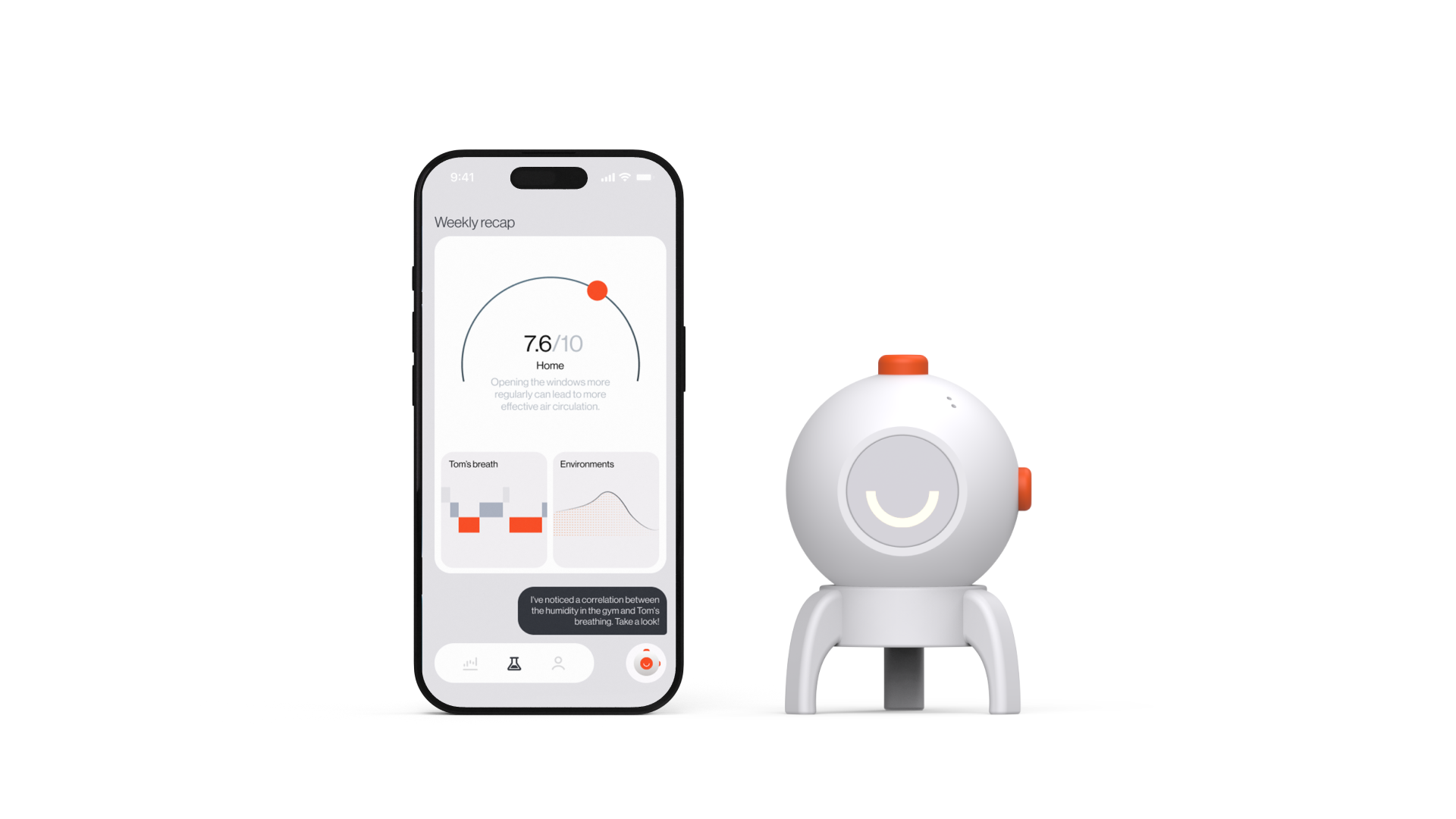
Nebulo prepares a weekly recap of the child's health and air quality in the different environments they have visited, trying to identify patterns and correlations.
Caregivers can access detailed data displayed in a simple, interpretable format, allowing them to stay informed about child's breathing and air quality of the environments.
Caregivers can name the environments the child has visited, allowing Nebulo to remember them and use them for data analysis and in the storytelling.

The child lifts Nebulo from its base and wakes it up by blowing on it. Nebulo initiates a brief voice interaction, recounting its dream and asking the child about their sleep.
Nebulo is designed to be carried by the child during his daily life in order to detect the air quality in the different environments the child visits, transforming them in planets to be visited.

At the end of each day, Nebulo tells the child a personalized story inspired by the places they've visited.
It remembers past explorations, allowing each new story to reference earlier adventures and create a sense of continuity.
Nebulo listens and records the quality of the child's sleep via the microphone, keeping track of it over time.
We designed Nebulo as a small explorer with a curious and friendly personality and a visually distinctive identity. The character was developed to resonate with children's imaginations, combining soft, rounded shapes and expressive animations to inspire trust and empathy.
This design choice not only makes the experience more playful and emotionally engaging, but also helps reduce the anxiety often associated with medical routines, reframing them as moments of discovery and care.
In addition, Nebulo is monitored by a variable interface.
We designed two stages of Nebulo.
The first stage, when it is awake and active, features a simple face that varies depending on its state: listening, dialogue, tired.
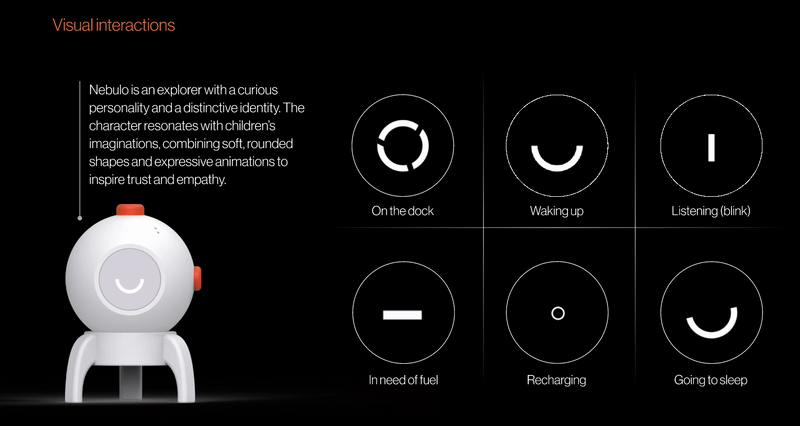
The second stage is storytelling, in which the face is replaced by simple animated images based on the content of the story.
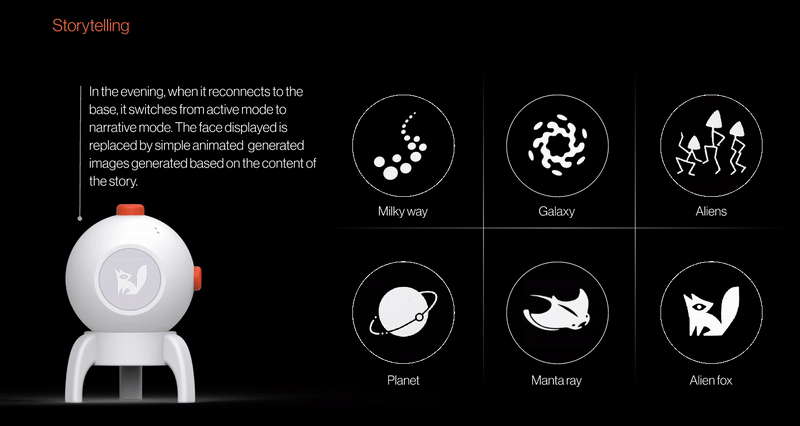
The app is designed for caregivers to monitor the child’s health and its connection to different environments. For this reason, the interface does not adopt the playful design language of the physical product. Instead, it focuses on displaying data in the clearest and most accessible way, ensuring that caregivers can easily interpret and act on the information provided.
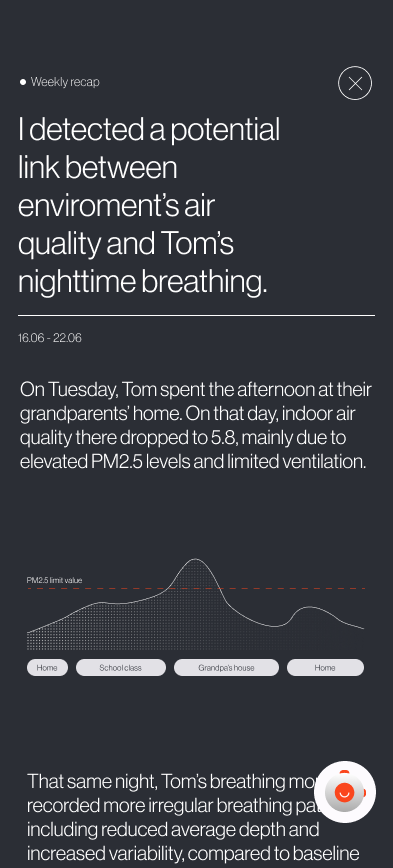
The key feature is the weekly recap dashboard, which visualises trends in the child’s breathing and air quality across environments.
The app automatically highlights relevant correlations, such as poor air circulation at home or increased humidity in specific places like the gym. Caregivers are encouraged to interact with Nebulo, the intelligent assistant, who offers contextual insights and suggestions in a friendly, non-technical tone.
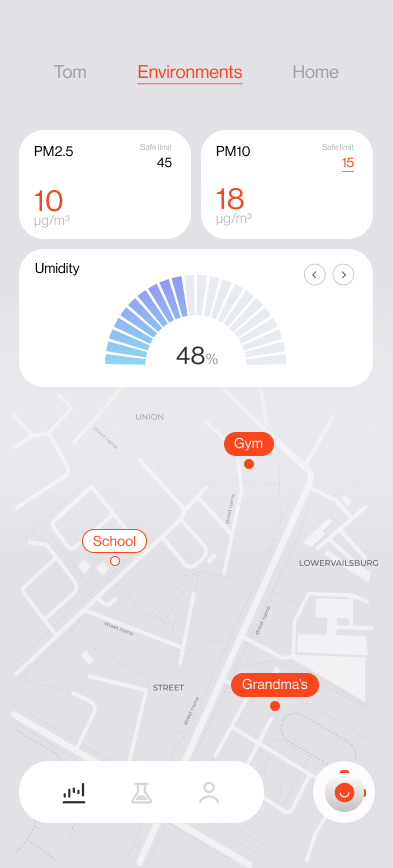
In the specific section of the app, all data is presented in a simple, interpretable format, allowing caregivers to stay informed, support their child’s autonomy, and collaborate with healthcare professionals when needed.
We also designed the landing page of the website to showcase the product from a business perspective and to support its sale.
The website is also envisioned to allow customers to purchase different covers for Nebulo, enabling them to personalize the product and make it more unique while adding extra grip and protection.
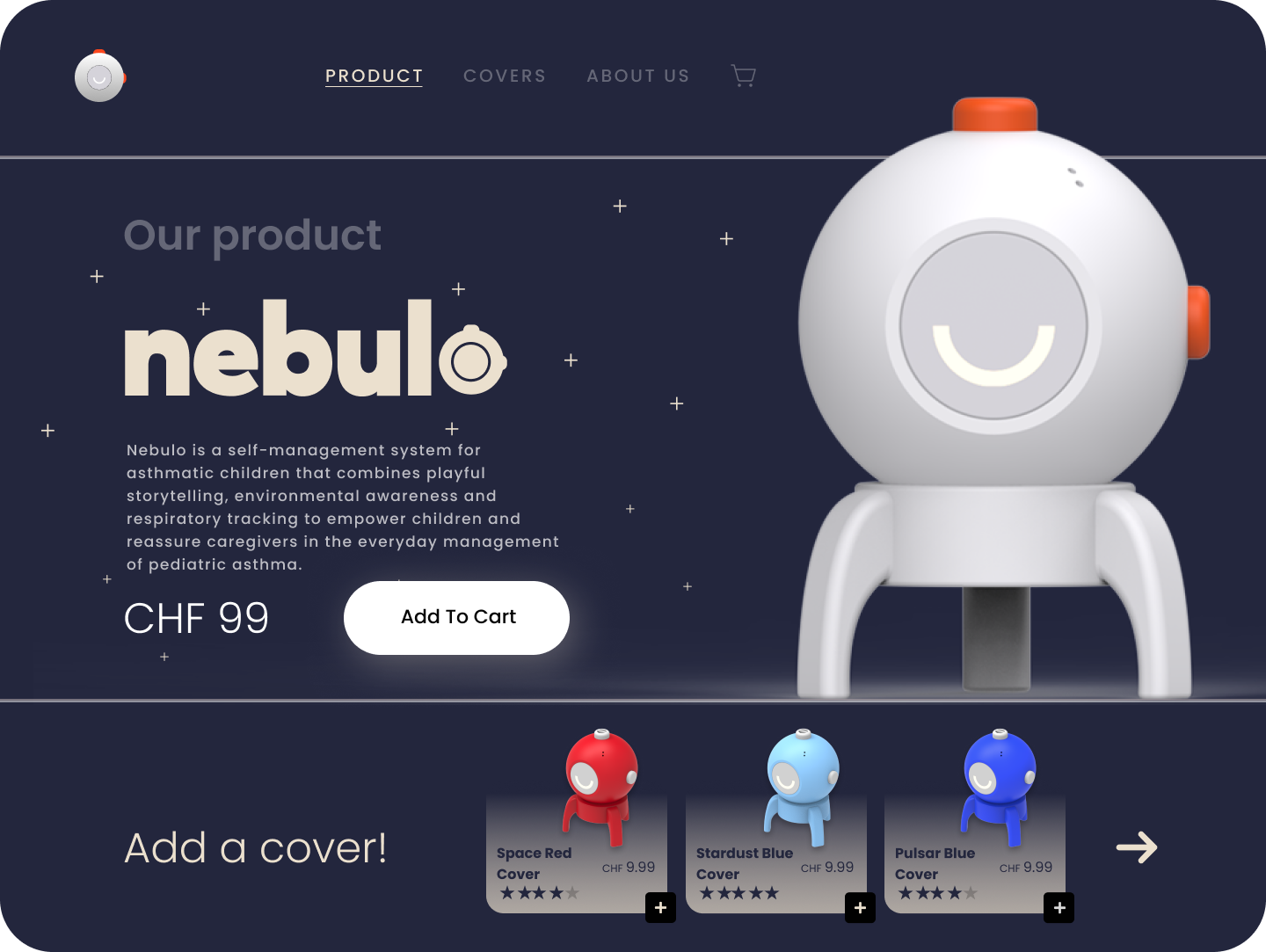

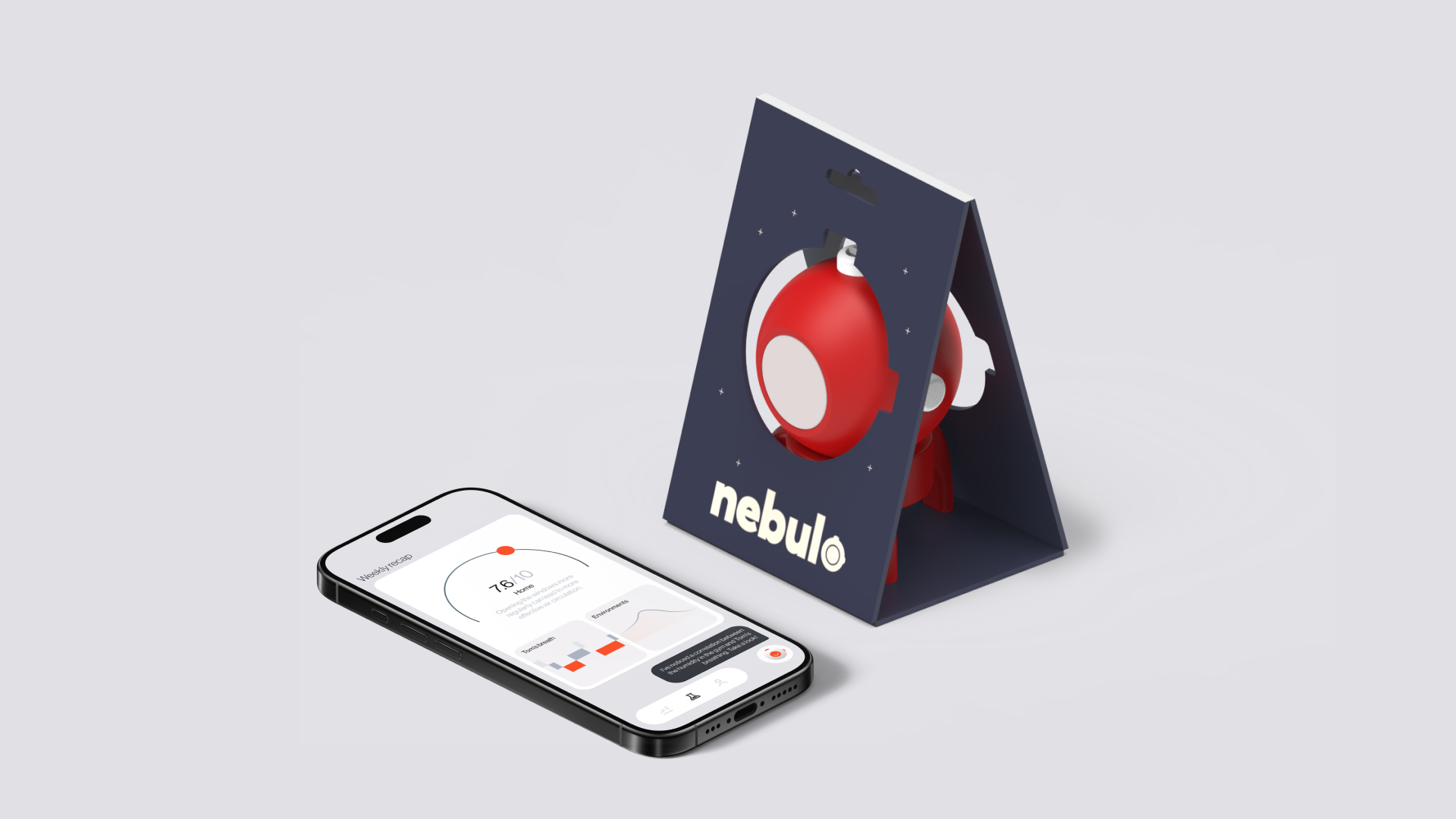
The prototype uses an Arduino Nano ESP32 in combination with a GC9A01 round LCD TFT screen.
Ideally, both the audio recordings and animations for the storytelling would be generated by AI based on the context of the conversation and user input. However, due to time constraints, we developed a prototype that demonstrates the experience, agent personality, and interaction through a scripted conversation.
The huge amount of images and the limited memory available on the Arduino forced us to explore different methods to achieve the desired result.
The first approach we explored was the use of the gif library, which, however, requires a spiff partition on the Arduino ESP 32.
Although this approach was excellent, after several attempts it proved unsuccessful as it was not possible to force a partition on the ESP devices.
Therefore, after careful study, we decided to convert the GIF files into C files containing bitmap images and upload them through PROGMEM, an AVR-specific attribute that tells the compiler to place constant data into flash (program) memory instead of SRAM.
The 3D model was designed in Fusion 360 and then 3D printed.
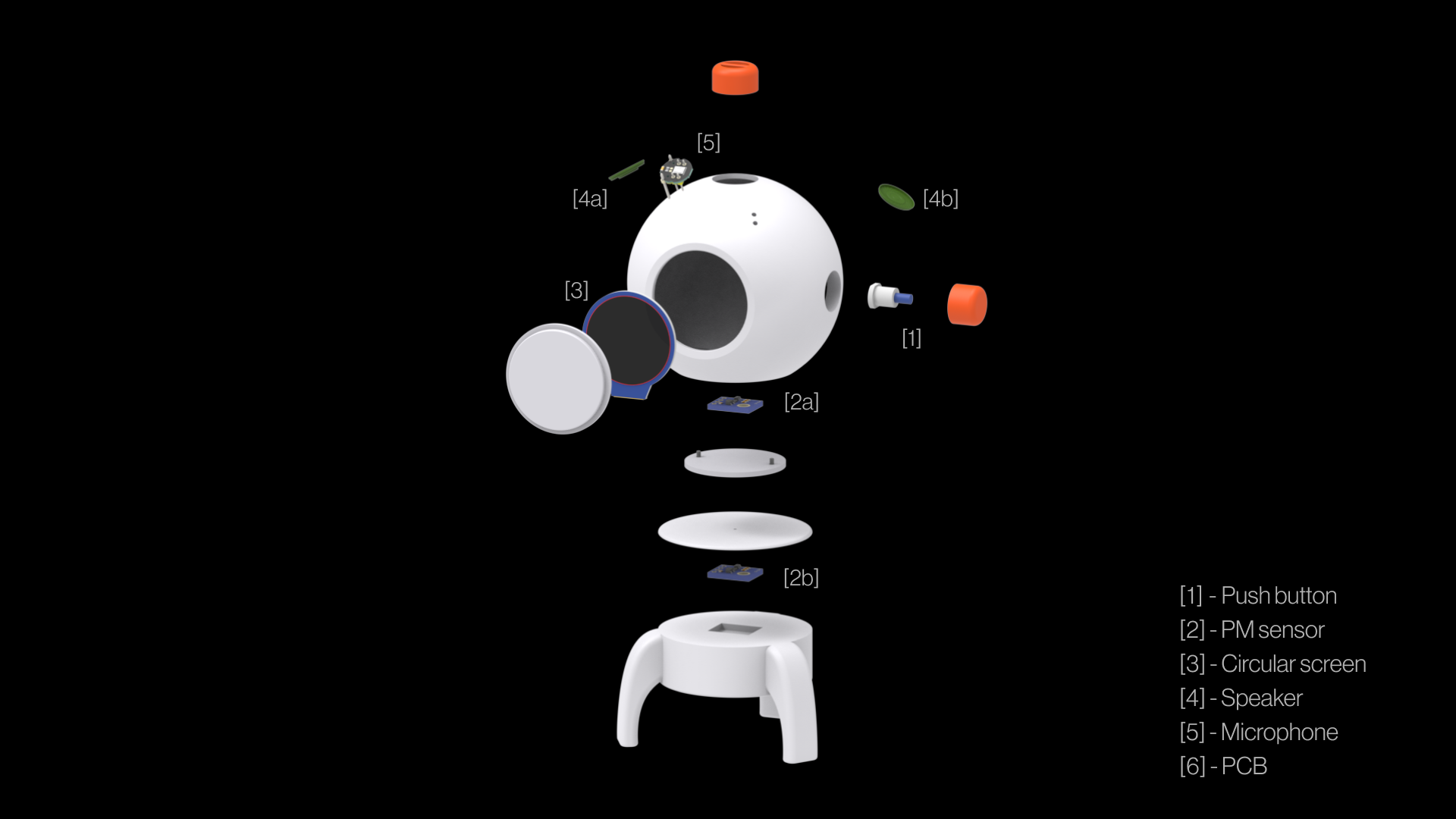
We planned our user testing based on a user scenario that outlines the child’s daily routine. The experience was designed around three key moments of the day: waking up, daytime activities, and bedtime. The user scenario helped us focus on specific interactive moments, such as: - the conversations between the child and Nebulo; - spontaneous play.
